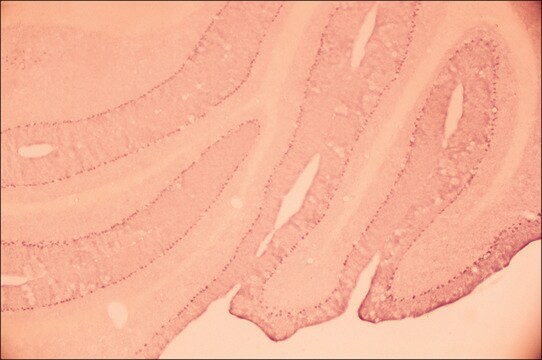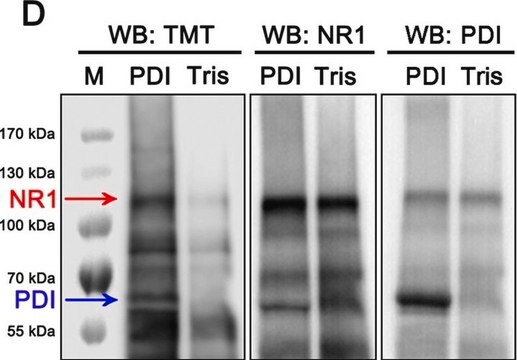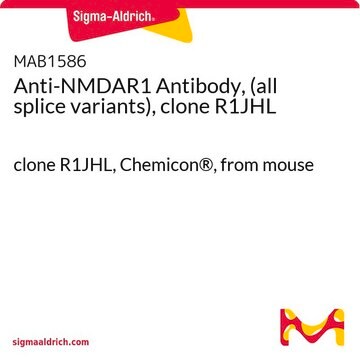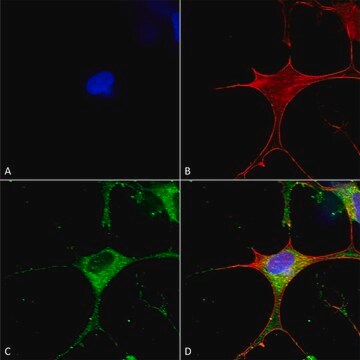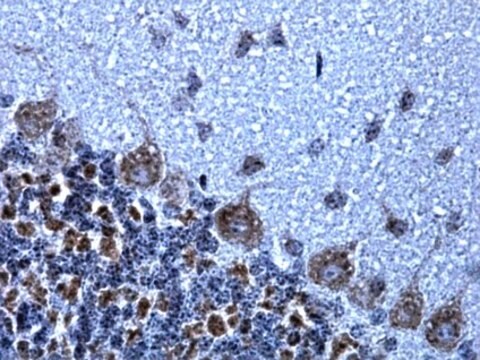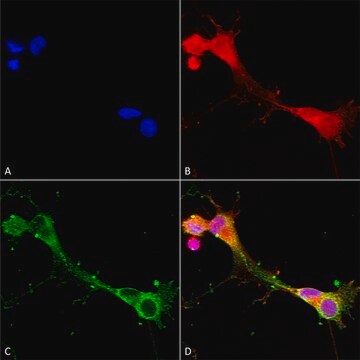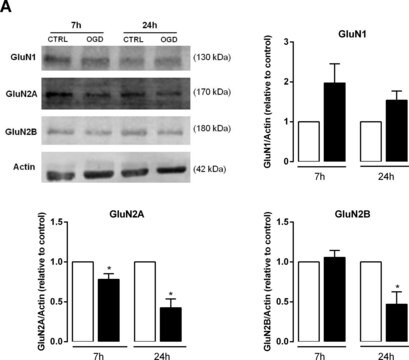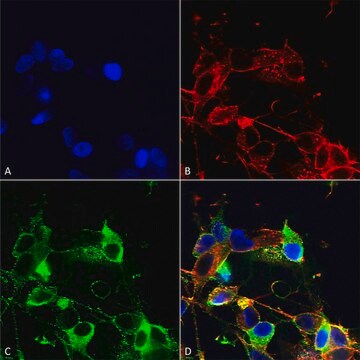MAB363
Anti-NMDAR1 Antibody, clone 54.1
clone 54.1, Chemicon®, from mouse
Synonim(y):
N-methyl-D-aspartate receptor channel, subunit zeta-1, N-methyl-D-aspartate receptor subunit NR1, NMDA receptor 1, glutamate [NMDA] receptor subunit zeta 1, glutamate receptor, ionotropic, N-methyl D-aspartate 1
About This Item
Polecane produkty
pochodzenie biologiczne
mouse
Poziom jakości
forma przeciwciała
purified immunoglobulin
rodzaj przeciwciała
primary antibodies
klon
54.1, monoclonal
reaktywność gatunkowa
rat, monkey, human, Xenopus
producent / nazwa handlowa
Chemicon®
metody
ELISA: suitable
immunocytochemistry: suitable
immunohistochemistry (formalin-fixed, paraffin-embedded sections): suitable
radioimmunoassay: suitable
izotyp
IgG2a
numer dostępu NCBI
numer dostępu UniProt
Warunki transportu
dry ice
docelowa modyfikacja potranslacyjna
unmodified
informacje o genach
frog ... Grin1(780048)
human ... GRIN1(2902)
rat ... Grin1(24408)
rhesus monkey ... Grin1(574380)
Opis ogólny
Specyficzność
Immunogen
Zastosowanie
A previous lot of this antibody was used in IC.
RIA:
A previous lot of this antibody was used in RIA.
ELISA:
A previous lot of this antibody was used in ELISA.
Immunohistochemistry: 1:500-2000, on 2-4% paraformaldehyde fixed tissue: typically free-floating, frozen or vibratome sections 24-48 hours at 4°C. Paraffin embedded formalin fixed sections have also been used at similar dilutions and incubation times. Care should be taken not to over fix the tissues. The clone 54.1 has been used for both light and electron microscopy.
Western blot:
1:500 with 50 migrograms/lane of material. Recognizes a 103-116kDa band.
Optimal working dilutions must be determined by end user.
Neuroscience
Neurotransmitters & Receptors
Jakość
Immunohistochemistry(paraffin) Analysis:
NMDAR1 representative staining pattern/morphology on rat spinal cord at 1:200 dilution. Immunoreactivity is seen as integral membrane and nerve fiber staining of neurons. Frozen section. IHC -Frozen Staining Examples: Rat Spinal Cord
Opis wartości docelowych
Postać fizyczna
Przechowywanie i stabilność
Komentarz do analizy
Rat brain and spinal cord tissue
Inne uwagi
Informacje prawne
Oświadczenie o zrzeczeniu się odpowiedzialności
Nie możesz znaleźć właściwego produktu?
Wypróbuj nasz Narzędzie selektora produktów.
Kod klasy składowania
12 - Non Combustible Liquids
Klasa zagrożenia wodnego (WGK)
WGK 2
Temperatura zapłonu (°F)
Not applicable
Temperatura zapłonu (°C)
Not applicable
Certyfikaty analizy (CoA)
Poszukaj Certyfikaty analizy (CoA), wpisując numer partii/serii produktów. Numery serii i partii można znaleźć na etykiecie produktu po słowach „seria” lub „partia”.
Masz już ten produkt?
Dokumenty związane z niedawno zakupionymi produktami zostały zamieszczone w Bibliotece dokumentów.
Produkty
The term neurodegeneration characterizes a chronic loss of neuronal structure and function leading to progressive mental impairments.
Nasz zespół naukowców ma doświadczenie we wszystkich obszarach badań, w tym w naukach przyrodniczych, materiałoznawstwie, syntezie chemicznej, chromatografii, analityce i wielu innych dziedzinach.
Skontaktuj się z zespołem ds. pomocy technicznej